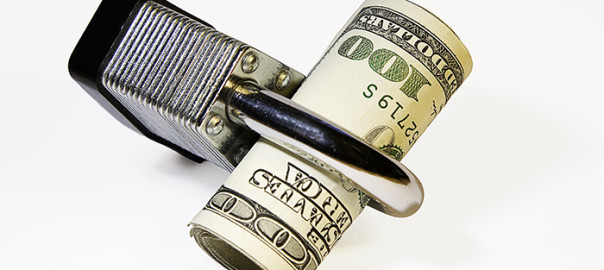 The Back Nine Staff: We know many of us on The Back 9 that have suffered financial loss after retirement and quickly slipped into depression, illness, loss of the relationship and worse. We thought this article is a good introduction to the subject and the quiz at the bottom from Rutgers University just might be worth your time. Let us know your thoughts after taking the quiz. After all, you are the real experts!
The Back Nine Staff: We know many of us on The Back 9 that have suffered financial loss after retirement and quickly slipped into depression, illness, loss of the relationship and worse. We thought this article is a good introduction to the subject and the quiz at the bottom from Rutgers University just might be worth your time. Let us know your thoughts after taking the quiz. After all, you are the real experts!
Financial Recovery in Later Life: Increase Your Resilience
By: Barbara O’Neill, Ph.D., CFP®, Rutgers Cooperative Extension, oneill@aesop.rutgers.edu
It is more difficult to recover from financial setbacks as one gets older. There is less time available to invest for retirement, recover money lost in the stock market, or receive “payback” from investments in human capital (e.g., job training or a college degree). Therefore, it is wise to consider ways to cope with traumatic life events, in case something goes awry and to increase one’s financial resilience.
What is “financial resilience”? It is the ability to withstand life events, both negative (e.g., loss of a job) and positive (e.g., birth of a grandchild), that impact one’s income and/or assets. Some financially stressful events, such as increased family size, unemployment, widowhood, disability, and health problems, affect people individually. Others, such as layoffs, plant closings, corporate scandals, recessions, stock market downturns, and acts of terrorism, affect large groups of people or society as a whole.
Financial resilience is essential because “stuff happens” in life, often unexpectedly. Below is a description of four common financial challenges that are especially difficult immediately before or during retirement:
Unemployment– Older workers faced with “involuntary retirement” (read: unemployment) in later life must take stock of their financial resources, marketable job skills, and emotional readiness for retirement. Often, job retraining is necessary if one’s prior job was in a declining industry sector. In addition to losing income, many workers also lose their health insurance at a time in life when health “issues” often surface. The federal COBRA law provides an opportunity to continue health insurance for up to 18 months, at group rates plus a 2% administrative fee, until an individual policy (or new group coverage) is obtained or a worker is eligible for Medicare. Those who leave a job at age 63 ½ can use COBRA benefits to tide them over until they are eligible for Medicare at age 65. However, only workers covered by employers with 20 or more employees are eligible for COBRA benefits and the cost is expensive, especially for those out of work.
Poor or Uncertain Health Prognosis- A life-threatening disease or chronic, debilitating illness prior to or during retirement is a financial wake-up call. Some people choose to accelerate their retirement date to enjoy unstructured time while they can. Others may reduce their work hours because they have to (e.g., fatigue or disability). A revised retirement savings analysis that incorporates the health prognosis is in order. Life expectancy estimates and retirement savings plan contributions may need to be adjusted. A poor or uncertain health prognosis may also prompt the drafting of estate-planning documents that, ideally, should be in place regardless of health status. These include a will, living will, and durable power of attorney.
Death of a Spouse- Few events can turn a person’s financial life upside down as the death of a spouse. In addition to shock and/or grief and loss of a spouse’s companionship, there is often less household income than before. There are also many decisions to be made (e.g., investing life insurance and retirement savings plan proceeds), forms to be completed, and suggestions from “helpful” family members and/or financial salespeople. Most experts advise surviving spouses to take their time and not make any major financial decisions immediately. Survivors who receive an insurance settlement or other payment can place the funds in a certificate of deposit (CD) or money market mutual fund until they have time to explore longer-term investment alternatives. Another important step is to identify and secure available resources such as life insurance policy proceeds, employee benefits, and veteran’s benefits.
Investment Losses- Prolonged market slumps can significantly erode gains made during previous bull markets. Not surprisingly, many investors, at all ages, discover that their investment risk tolerance isn’t as aggressive as they thought it was. Financial experts generally preach patience and a long-term perspective. After all, even people who are 55 or 60 might have an investment time horizon of 30 more years. Investors who try to “time the market” (i.e., try to catch the highs and lows) often miss the best trading days that inevitably follow days with large losses. For investors who are already retired, limiting withdrawals from investment accounts is often required during market downturns to reduce the risk of outliving one’s assets.
There is no way to be fully prepared for any of these traumatic life events that are especially difficult in later life. There are however, some time-tested strategies to increase financial resilience. Financial resiliency is enhanced with monetary resources, such as emergency savings, health insurance, and a good-paying job or retirement benefits. Another resource for financial resiliency is one’s human capital. Economists define human capital as all of the knowledge, skills, experiences, and other personal qualities, including one’s health status, that people have available to “sell” to potential employers. Social capital also increases financial resiliency. This includes a support system of family, friends, co-workers, neighbors, and others that can provide financial assistance, not to mention emotional support, during hard times.
Many frequently cited expert recommendations increase financial resiliency by enhancing resources and/or reducing expenses during a time of crisis. Consider the following examples:
• Maintain a Low Debt-to-Income Ratio- Monthly consumer debt payments should be 15% or less of monthly take-home pay. Ratios of 20% or above are dangerous. Example: $275 of debt payments divided by $2,500 of net pay equals a consumer debt-to-income ratio of 11% (275 divided by 2,500), which is considered acceptable. Raise the month debt payments to $450, however, and the ratio increases to 18% (450 divided by 2,500), which is just bordering the danger zone.
• Maintain an Emergency Fund- Set aside at least three month’s expenses. In severe economic downturns, consider saving even more (e.g., six to eight month’s expenses). Keep this money in liquid cash equivalent assets such as a bank or credit union savings account, money market mutual fund, or short-term certificate of deposit (CD).
• Keep Your Skill Set Sharp– If you are currently working, or plan to keep working in later life, never consider your education or job training finished. Continue to develop new marketable skills to increase human capital and remain employable in today’s competitive labor market.
• Purchase Adequate Insurance- Protect dependents against the loss of a breadwinner’s income with life insurance and purchase disability insurance to provide continued income following an accident or illness. In addition, try never to go without health insurance through an employer, COBRA, public benefits, or an individual policy.
• Practice Good Health Habits (e.g., diet, weight, exercise, sleep, etc.)- Healthy people are less likely than unhealthy people to have “issues” that limit workplace productivity at work and/or result in high-cost illnesses and chronic conditions.
• Increase Your Knowledge of Financial Topics- This will help you make smart financial decisions. To learn more about basic investment principles and characteristics of specific securities, visit the eXtension Investing For Your Future home study course at http://www.extension.org/pages/Investing_for_Your_Future.
Resiliency varies from person to person according to the situation at hand, personality characteristics, and personal resiliency resources. Two people can experience exactly the same situation but handle it very differently. How easily could you handle some type of major life crisis, both financially and emotionally? Take the Personal Resiliency Assessment Quiz at http://njaes.rutgers.edu/money/resiliency/ to assess your capacity to handle financially stressful life events.
When you’re finished, check your score and the summary that tells how you’re doing. Then take action on areas of weakness. For example, if you are living “paycheck to paycheck,” increase your emergency reserves and decrease outstanding debt. Financial recovery in later life will be much easier when are financially resilient.
Have a thought, comment or willing to share your experience? Save us as a favorite in your browser (www.thebacknine.us) or send in your comments to our https://back9.us/contact-us/ link on the bottom of our home page.






